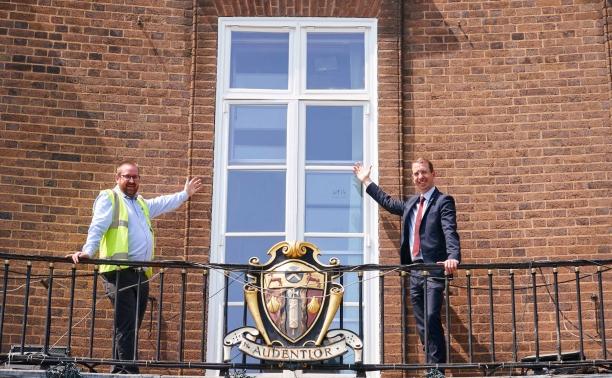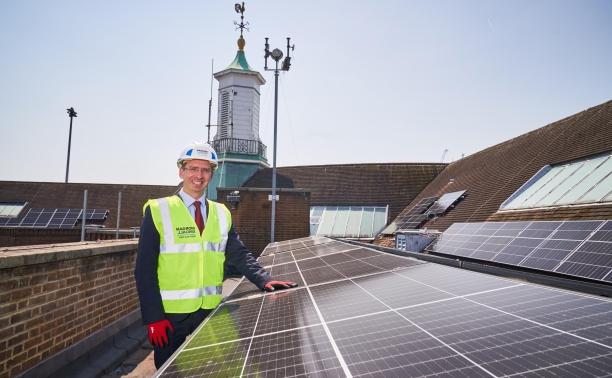
The Town Hall has been awarded an Energy Performance Certificate (EPC) rating of C, indicating that it operates between 69%-80% efficiency – an achievement rarely attained by Grade II listed buildings
Built in 1939, the Grade II listed Town Hall has recently undergone extensive and innovative works to reduce the carbon footprint of the building whilst respecting its heritage value. The refurbishment led by Watford Borough Council, included significant energy-saving measures such as installing advanced vacuum-glazing into carefully restored historic window frames, new roof and cavity wall insulation, and 144 state-of-the-art photovoltaic (PV) solar panels.
These enhancements, supported by a £3.2m grant from the Public Sector Decarbonisation scheme, have transformed the Town Hall into a leading example of how historic buildings can be adapted to meet 21st-century sustainability goals. The energy-efficient measures have not only reduced heat loss and carbon emissions but also significantly lowered operational costs. Initial estimates suggest a 40% reduction in gas bills and a combined annual saving of 166 tonnes of carbon emissions.
The sustainable upgrades to the Town Hall lay a strong foundation for its transformation into a vibrant hub for innovation and culture, known as the ‘Town Hall Quarter’. The complex will include a dynamic business space which will be the first of its kind in southwest Hertfordshire, the new Watford Museum – enhanced by £2.45 million from The National Lottery Heritage Fund – and the neighbouring Watford Colosseum, restored to offer world-class entertainment.

Elected Mayor of Watford, Peter Taylor, said: “I am delighted that our Grade II listed Town Hall has achieved an impressive EPC rating of C. This recognition demonstrates the council's commitment to preserving the town's architectural heritage while meeting modern energy performance standards. It also shows that heritage and sustainability can go hand in hand.
“This improved EPC rating will bring significant long-term savings by lowering energy costs and reducing heat loss, all while reducing carbon emissions. These improvements are part of our aim towards a greener and more sustainable Watford, in line with my manifesto promise to achieve net-zero carbon emissions by 2030.”
Councillor Ian Stotesbury, Portfolio Holder for Transport and Sustainability, said: “This is great progress in improving our council buildings, making them more energy efficient for the planet and less costly to run. The journey to being net zero is a long one - but this is a big step!”
The transformation of Watford Town Hall is part of the council’s wider Town Hall Quarter programme, which will boost visitors, create jobs, and drive Watford’s future success. You can find out more at watfordtownhallquarter.com.
This achievement also supports the council's commitment to achieving carbon neutrality by 2030. For more information on the council's sustainability efforts and its journey toward a net-zero carbon future, visit www.watford.gov.uk/sustainablewatford.
